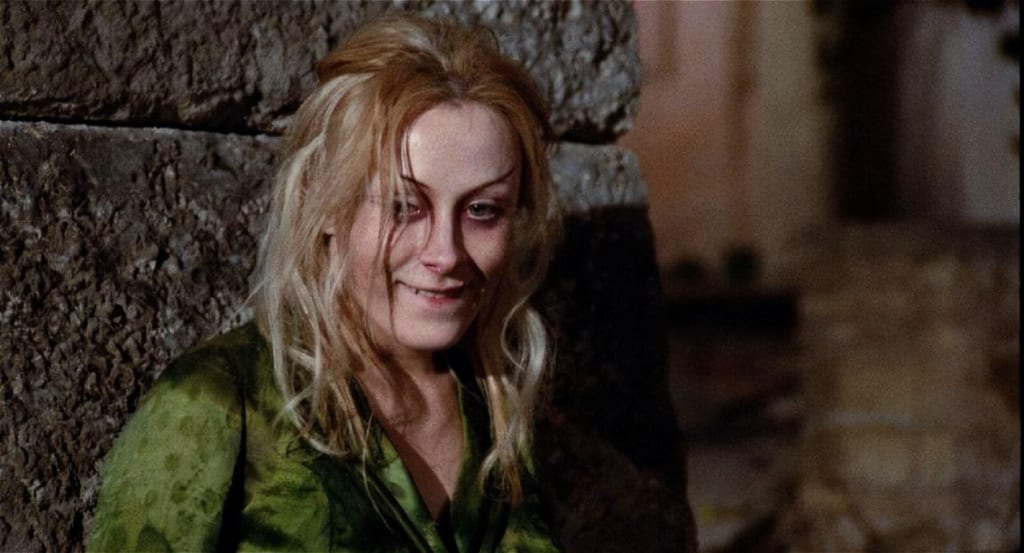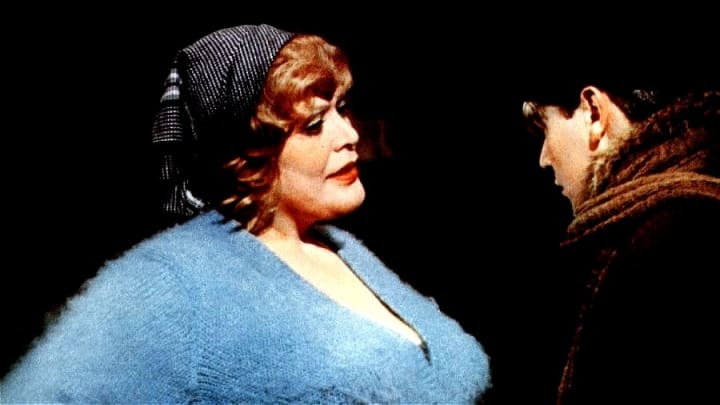
Fellini's Amarcord is a film I had not seen in twenty-five years; suddenly, though, I had the urge to watch it again, and many other Fellini films I hadn't seen in years as well. Perhaps I'll spend a month or two getting reacquainted with masterpieces such as La Dolce Vita, 8 and 1/2, Satyricon (my personal favorite), La Strada, and City of Women. Amarcord may not trump them all, but it is quite a slice of life: an image of a historical time and place, the little circle of existence as the viewer peers deep into it giving them a glimpse of other little circles. It is a testament to the power of humans to celebrate and dream, to fantasize escape in the midst of struggle and turmoil. Like the fireworks set off during the opening festival in the little Italian village at the beginning, these pops and bangs of human beings enact their weird, seemingly absurd roles, trapped in their dream of who they are, and dreaming all the while of Who They Wish to Be.
Titta (Bruno Zanin) is a young man who lives with his bellicose, angry father, Aurelio (Armando Brancia, whom the viewer expects every moment to drop dead from a heart attack), and his mother Miranda (Pupella Maggio), a woman that harangues her husband with insults, a stereotypical Italian mother from a caricature. Their other child, Titta's younger brother Oliva (Stefano Proietti), is shown at school, where fascist education takes the form of cartoonishly flatulent instructors, and one Tiger Woman. At play, the obese Ciccio (Fernando De Felice) is shown to have a crush on Aldina (Donatella Gambini). Later, he fantasizes about a fascist wedding ceremony wherein a talking Mussolini head, which seems to be made of pink tissue paper, pronounces a fascist blessing on the happy totalitarian couple. This is a foreshadowing of the film's denouement, wherein Titta, searching his young life away for love (he is nearly seduced by a massive tobacconist (Maria Antonietta Beluzzi) with huge breasts, who then instantly rejects him for being erotically inept), finds his desired object of affection marrying another man.

The circles of life presented by Fellini, the masterful little portraits presented as slices of life, seen from the bottom, the middle, and the top--are topped off by some of his famous grotesques: the Arab prince who resides in a palatial hotel with his harem, the "pussy palace" that one drudge of a worker sees as a sort of paradise; the homeless prostitute Volpina (Josiane Tanzilli), whose wild-eyed visage marks the festival of the "burning of Old Witch Winter" in effigy. She's an enigmatic figure through the early part of the film, and the viewer is left to wonder at this ghost of debauched life, this wild-eyed, wild card amid the comfortable peasantry and bourgeois town folk. She could almost be a madwoman from a fairy tale.
Titta's father, a socialist, is, at one point, kidnapped by the fascists, after a blackout in which the strains of "The Internationale" are heard playing through the streets. It is suspected that Aurelio is responsible, and so he's taken to the police station, roughed up, forced to drink castor oil, and returned home alive but "reeking" for some unspecified reason. I suppose it is a miracle he returned home at all.
Some of the most brilliant scenes involve Teo (Ciccio Ingrassia), the mad uncle in an asylum who is "taken out once a month" by the family, for a picnic. He wets his pants, forgetting to unbutton them before urinating, and then climbs a tree, yelling out to God (one supposes) in his frustration: "I want a woman!" A dwarf-like comic nun from the asylum comes to the rescue ("I won't stand for any of this damn foolishness!" she lambasts him, and the poor man finally relents, coming down out of his perch). It is here that the rustic, Italian country's beauty is exposed as perfectly as a portrait one might hang on a wall.
At intervals, a narrator has broken the "fourth wall," addressing the audience directly, explaining, as if he is the narrator of a travelogue, the ways of the folks of Borgo San Giuliano, and what threads and strands of meaning make up the tapestry of their lives. Fellini is very good at this, and at making a cinematographic composition harkening to the absurd, comic image of a dream. For example, a man happens upon a scene, looking directly at the audience and laughing in the foreground; behind him, Titta's father jumps in frustration to the ground, at the corner of a shabby old farm building that looks like something from a portrait. The entire scene could not take more than a minute, but it recalls the absurdity of a sudden image swimming up from slumber, a smash-cut of a man jumping to the ground ("Why does he do that?" the dreamer may well wonder), and an unknown dream performer in the foreground looking back for a moment, considering the absurd, comic image, and inviting the dreaming consciousness to laugh with him, to find the absurdity in that one inscrutable actor and his action. This same device is employed several times in Satyricon, and always to the effect that the viewer becomes the character looking out at him, from the midst of the cinematic dream, wherein he or she is disoriented by the seeming surreality of what is envisioned.
In the end, though, this picturesque film, (an image of which, by the way, a young child in a cloak with a backpack staring down a horned animal, was employed in a graphic novel tribute to Fellini's films by Milo Manara) is a heartbreaker. Titta has tried to seduce women while at confession (with a priest obsessed with masturbation and floral arrangements), at a tobacco shop, and at a cinema (imagine that!), but his love, Gradisca the Hairdresser (Magali Noël) is leaving on a honeymoon with a Carabiniere, and he vanishes at the end. Fascism, perhaps, has stolen his love away. And maybe he realized, at some buried level, that the future of fascist Italy was written in sorrow, not joy.
Amarcord is like time-traveling back to a place and an era and seeing the lives, hopes, and dreams of common people, not yet wise to the fact that their future would be one of killing and war. They lived between the wars, adapting to the new regime, living their lives in poverty and simplicity, but with the inner eye set on the romance of the music of the cinema, and of love, which called them home.
Finito.
Amarcord Trailer (Federico Fellini, 1973)
About the Creator
Tom Baker
Author of Haunted Indianapolis, Indiana Ghost Folklore, Midwest Maniacs, Midwest UFOs and Beyond, Scary Urban Legends, 50 Famous Fables and Folk Tales, and Notorious Crimes of the Upper Midwest.: http://tombakerbooks.weebly.com






Comments (3)
Interesting review
Sounds fascinating. Never seen it.
Very good review and well written.